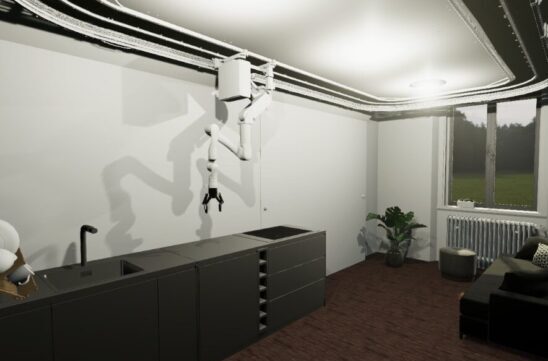TransforM – Transparency for machines in personal intelligent environments

Principal Investigators
Prof. Dr. Andreas Butz, Ludwig Maximilian University of Munich (Homepage)
Prof. Dr. Sarah Diefenbach, Ludwig Maximilian University of Munich (Homepage)
The TransforM project is a follow-up to the SPP-2199 PerforM project, which investigated personality as an interaction paradigm for robotic intelligent spaces. PerforM has developed a so-called “room intelligence”, that is, a smart living environment with robotic elements and smart kitchen appliances that can be addressed as a coherent unit. When exploring this paradigm in user studies, a conflict emerged between the desire for transparency in such an environment (the user can understand what is going on behind the scenes) and the desire for the invisibility of technology, especially in one’s own home (the user wants things to just work and not have to worry about the details). The right level of transparency is therefore crucial for the acceptance of such an environment. Building on transparency concepts from the field of Explainable AI and inter-human communication, we investigate how transparency can be constructed and communicated in personal intelligent environments such as spatial intelligence and beyond. For this purpose, we want to design a language and toolbox of transparency modules and evaluate them in several user studies. Among other things, these studies will provide insights into how the transparency building blocks are perceived by users, what relationships exist between transparency and trust and acceptance, and to examine whether it is possible to identify a “transparency sweet spot”. In addition, we explore the potential of “adaptable transparency”, that is, adjusting the level of transparency to individual characteristics and preferences of users (e.g., technical expertise, personality differences). Based on these studies, we aim to extract general scalable interaction paradigms and design guidelines for future smart spaces that ensure that they are neither too opaque nor too complex and – through the right level of transparency – generate an appropriate, calibrated level of trust.
Researchers
Dr. Daniel Ullrich, LMU Munich (Homepage)
Ilka Hein, LMU Munich (Homepage)
Main Research Question
How can technology transparency and unobtrusiveness/invisibility of pervasive computing environments be conveyed to enhance user experience?
Sub Research Questions
- To what degree can design principles be applied for creating technology transparency in smart spaces?
- Is it possible to identify a “sweet spot” that combines reasonable transparency with limited complexity?
- Are there specific critical issues where users want transparency – and others where they prefer a simplistic environment?
- Which individual differences (e.g., technical expertise, personality differences) do affect preferences for transparency versus invisibility?
- How do transparency and invisibility affect the user experience and variables such as trust and credibility?
- What are design solutions to enhance transparency and invisibility/unobtrusiveness of the room intelligence?
Publications
-
Hein, I., Diefenbach, S., & Ullrich, D. (2023). Designing for technology transparency – Transparency cues and user experience. Gesellschaft für Informatik e.V.. https://doi.org/10.18420/muc2023-up-448